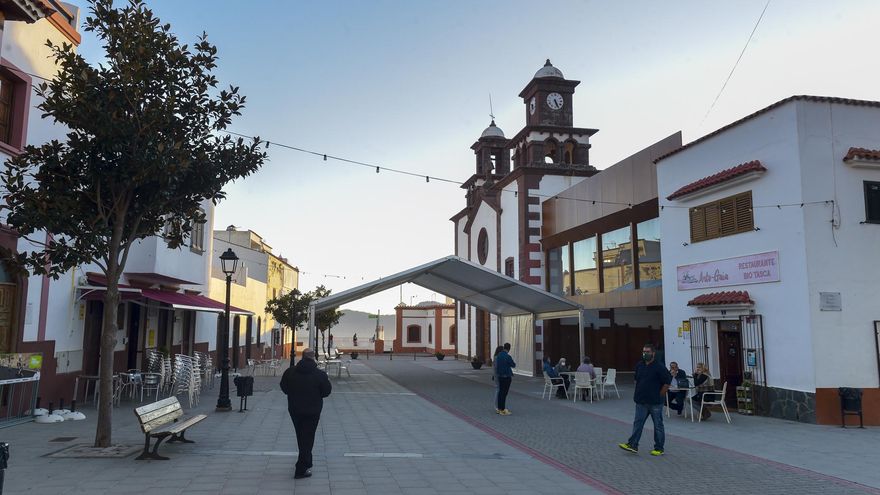
Pájara, located in Fuerteventura and governed by a coalition of PSOE-CC, is the Canarian municipality with the highest revenue per inhabitant. Meanwhile, Artenara, situated in Gran Canaria and under the leadership of the PP, stands out as the locality in the archipelago that spends the most on each of its residents, on average. These are just two of the many insights that can be derived from the municipal macro-statistics released by the General Council of Spanish Economists this Wednesday.
Among a plethora of socio-economic information of various kinds – population, median age, employment contracts, unemployment… – this new tool compiles the data and figures of the 8,131 localities in the country, its 50 provinces, and its 17 autonomous communities, including, of course, those from the two regions and 88 municipalities of Canarias. Data extracted from around twenty official sources including the Tax Agency, the National Institute of Statistics, the State Public Employment Service, or the Independent Fiscal Responsibility Authority, among others. In the realm of taxation, for example, the new statistics from the General Council of Economists allows us to see, based on the most recent data – from the 2023 fiscal year – the municipalities in the islands where more or less revenue is collected – and how much – and in which ones more or less is spent on their population – and also how much.
El Pinar de El Hierro leads the per capita income ranking in the western islands
[–>
Regarding revenue, the revenue per inhabitant only exceeds one thousand Euros per year in three localities, and all three belong to the province of Las Palmas: Pájara, with 1,231 Euros per capita; Mogán, with 1,090 Euros; and Artenara, with 1,073. Following them are two municipalities in El Hierro, El Pinar, with 882 Euros of revenue per capita, and Valverde, with 869. Moving down the ranking are municipalities with annual incomes below 800 Euros per resident such as Agaete, with 791 Euros; Yaiza, with 771; Adeje, with 767; Teguise, with 756; San Bartolomé de Tirajana, with 753; and Frontera, with 749 Euros. The revenue per inhabitant in the remaining localities of the Autonomous Community ranges from 691 Euros in Santiago del Teide, in Tenerife, to 143 in Valleseco, in Gran Canaria, which is by far the municipality in the region generating the least fiscal revenues per capita. The Tenerife municipality of San Juan de la Rambla, with 161 Euros, Puntagorda, in La Palma, with 165 Euros, Agulo, in La Gomera, with 168, and El Tanque, in Tenerife, with 183, are the only other four populations where revenue falls below 200 Euros per resident.
On the public expenditure front, the only eight municipalities with a per capita expenditure of over 2,000 Euros per year are Artenara, with 2,521 Euros spent per each of its residents; Garafía, with 2,515 Euros; Fuencaliente, with 2,332 Euros; the municipality of Betancuria in Fuerteventura, with 2,248; Puntagorda, with 2,133; Mogán (2,086); Tijarafe (2,029); and Adeje (2,006 Euros).
At the other end of the ranking, the populations with the lowest expenditure per inhabitant are the three in Tenerife, and the
Public Spending Comparison in Northern Municipalities
In Icod de los Vinos, the per capita public expenditure amounts to €627 per year – according to the 2023 data. In Los Realejos, it falls below €541, and in Tacoronte, which ranks as the municipality with the lowest expenditure per inhabitant in the Islands, it doesn’t even reach €535.
Garafía stands out for the largest gap between revenue and spending per resident
In provincial terms, it is striking that the towns in the demarcation of Santa Cruz de Tenerife collect less, on average, than the populations of the province of Las Palmas and, at the same time, also spend more on their residents. On average, the revenue per inhabitant in the municipalities of the western islands amounted or rose to €426.1 last year, compared to €523.6 in the Las Palmas demarcation. The average income in the towns of the eastern islands thus exceeds those of the Tenerife province by 23%. Additionally, the public spending per inhabitant in the municipalities of Tenerife, La Palma, La Gomera and El Hierro amounts to €1,249.3, almost 6% higher than the €1,179.8 in the populations of Gran Canaria, Lanzarote and Fuerteventura.
Variations Between the Two Autonomous Capitals
There are also certain differences between the two autonomous capitals. In Santa Cruz de Tenerife and Las Palmas de Gran Canaria, the per capita revenue is practically the same – €563.65 in the Tenerife capital and €562.14 in the Gran Canaria capital – but the spending per inhabitant is considerably higher in the municipality led by nationalist José Manuel Bermúdez – €1,038 – than in the city governed by the socialist Carolina Darias, where it was or was in 2023 €818.85.
Subscribe to continue reading















